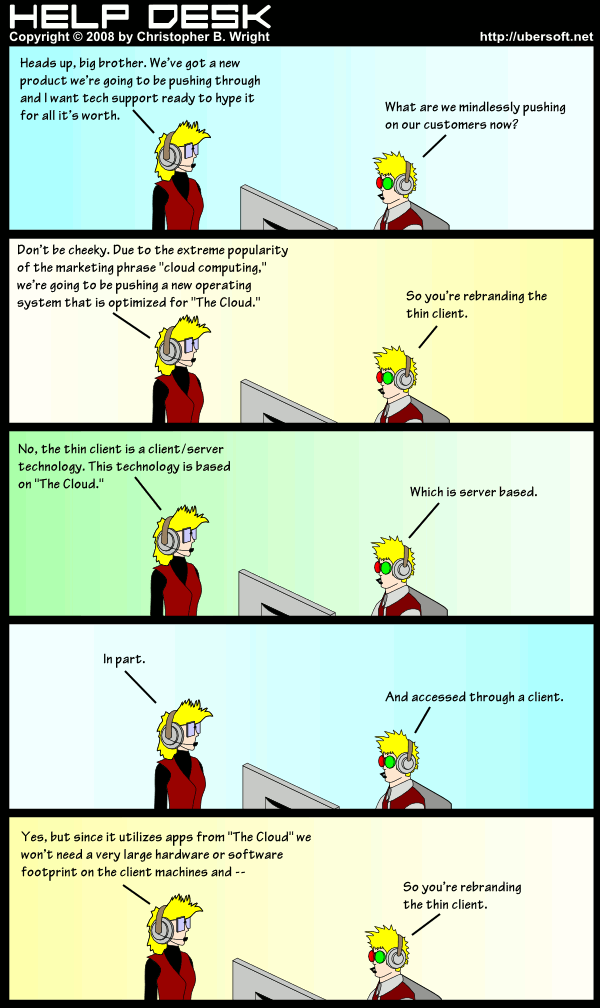The past six to nine months we’ve seen the rapid invasion of the Cloud, Cloud Computing or a variant including Cloud. We’ve had different Barcamp style Cloudcamps, there are bloggers rebranding their virtualization blog to a cloudblog and there are new aggregators popping that gather all cloudy news.
Now let’s face it, there is absolutely nothing new on the horizon.
The cloud terminology has been coined by the marketing people, you know the weird folks in suits that are a bit uncomfortable at campstyle events, yep those guys. Oh well.. not all of them are like that 🙂
When Amazon had an overstock of machines in the summer of 2002 they launched Amazon Web Services and for a lot of people that was the start of what today they call Cloud Computing. Their Server as a Service , the Elastic Compute Cloud, also known as “EC2”, The idea that you can launch a Virtual Machine somewhere remotely, manage it via an API and Pay As You Use .
So in came the abbreviations, SAAS, Software as a Service, the new business model for a lot of software vendors, PAAS , Platform As A Service, the new service for the ISP’s. And SOSAAS, Same Old Software as a Service
But the strange thing is that the idea wasn’t Amazon’s in the first place.
If you would read the following project description :
“The project is building a public infrastructure for wide-area distributed computing. We envisage a world in which execution platforms will be scattered across the globe and available for any member of the public to submit code for execution. The sponsor of the code will be billed for all the resources used or reserved during the course of execution. This will serve to encourage load balancing, limit congestion, and hopefully even make the platform self-financing.”
You’d think Amazon wouldn’t you ? Wrong bet, The above text is coming straight from the Xenoservers project at the University of Cambridge yes, the project that eventually lead to the development of the Xen Virtual Machine Monitor, on which coincidentally Amazon EC2 is based.
But was this the first form of distributed deployment of user resources. ?
Reuven, Mr Cloud, thinks not ,
Even way back then the criminal syndicates had developed “service oriented architectures” and federated id systems including advanced encryption. It has taken more then 10 years before we actually started to see this type of sophisticated decentralization to start being adopted by traditional enterprises.
So the script kiddies had a whole cloud of dynamically on demand deployable instances of hosts where they could deploy their malware. No Pay As You Go, and certainly no fuzz about which licenses needed to be bought.
Just as in today’s Clouds, on of the reasons why the cloud is getting so popular is that people using it don’t have to think about how many extra software licenses, the biggest part of it’s underlying technology is Open Source, not a non scalable, proprietary platform
The cloud to me is the mix of Virtualization, Scalability, Automation , Open Source, Large Scale Deployment , playing the puppetmaster, and High Availability .. and let it be the Virtualization part and the Management of Virtual environments which I cover for Virtualization.com
So yes you’ll be reading more cloud news here, as after all part of it is just plain old Virtualization, or SAAS, or Thin Client


